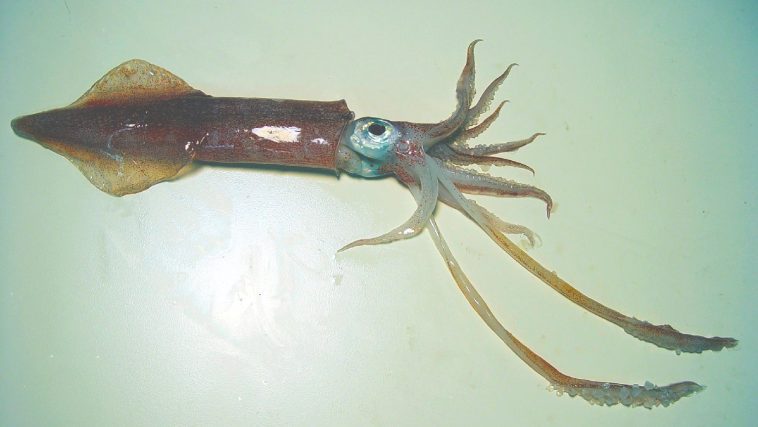[Originally published in 2015 as More Examples of Organisms Changing the Products of Their Genes!]
Some time ago, I posted an article about an octopus that actually changes the products of its genes so it is better suited to its environment. I had never heard of such a thing before, and it seemed fantastic to me. After all, when I was at university, I was taught the central dogma of molecular biology:
As scientists learned more about the marvelous design of DNA, they found that the idea of one gene producing one protein was far too simplistic. In plants and animals (and many microscopic organisms as well), the genes are interrupted by stretches of DNA called introns. At first, geneticists lumped introns into the category of junk DNA, an evolution-inspired idea that couldn’t be more incorrect. However, molecular biologists eventually found out that the introns are an integral part of a multi-layered data storage system that allows a single gene to code for up to tens of thousands of different proteins through a process called alternative splicing.
Essentially, the introns divide a gene into several “modules of information.” The cell can chop up the RNA copy and splice those modules together in different ways. Each different way the modules are spliced produces a different protein. Once alternative splicing was figured out, the idea of one gene producing one protein was discarded. One gene can, in fact, produce lots and lots of different proteins. However, even in alternative splicing, the information contained in the DNA is preserved. Each individual module of information codes for a specific part of a protein, and if you look at that specific part of the protein, it is made exactly the way that module of information says it should be made.
Well, the octopus study I wrote about nearly three years ago shows that’s not always true. Some organisms can edit their RNA to make a final protein that is actually different from what the modules of information in the gene actually specify!
Why would an organism want to do that? In the case of the octopus, it was so that the creature could survive in very cold waters. Its DNA specifies a series of proteins that work best in warmer waters. Using those proteins, the octopus wouldn’t survive well in cold waters. To fix this problem, the octopus copies the gene using RNA, does alternative splicing where necessary, and then edits the result to make the proteins work better in cold water! This process is called RNA editing. How does the octopus “know” to do RNA editing? As far as I can tell, we have no idea. We only know that it does.
But how common is this? Well, a study I read recently gives us some clues about that. First, the study says that all eumetazoans (a group that contains most animals) express the chemicals necessary to do RNA editing. Thus, it is at least possible that the vast majority of animals have the ability to change the products of their genes. It then gives references to several studies that have seen small amounts of RNA editing in certain mammals, like mice. However, it then references another study that shows Drosophila (commonly called “fruit flies”) edit up to 3% of all the RNA they produce!
The focus of the article, however, was an analysis of Doryteuthis pealeii, a species of squid. They concentrated on the proteins related to the squid’s nervous system, and they found that, remarkably, 60% of them are made with RNA editing.1 In other words, the majority of nervous system proteins that this squid makes are not faithful to the original information stored in the DNA. Somehow, the squid isn’t “satisfied” with what the DNA tells it to do, so it gets out the “red pen,” makes a few edits, and produces a different protein! Why does it change so many of its proteins? The authors have two thoughts:
An equally intriguing question is why squid edit to this extent? The process clearly creates tremendous protein diversity, and this may in part explain the behavioral sophistication of these complex invertebrates…The large number of sites in squid suggests that editing is well positioned to respond to environmental variation. Most model organisms studied so far are mammals which are homeotherms. Future studies of more diverse species are needed to reveal the extent to which cold-blooded organisms might utilize extensive editing to respond to temperature changes and other environmental variables.
In other words, RNA editing might allow them to participate in more complex behaviors, and it might help them adapt to temperature changes and other environmental changes, as was seen in the octopus study from three years ago.
Of course, while this is really incredible, it isn’t surprising to a creationist. After all, we know that the Creator built His organisms with many means by which they can adapt, so it makes sense that He would build an editing system that would allow organisms to vary the products of their genes so as to quickly respond to environmental changes. In fact, back when I wrote about the octopus study, I said:
Of course, how the octopuses do RNA editing and how they know how much of it to do is pretty much unknown. However, it is clear that RNA editing is yet another way the Creator has designed His creation to adapt to change. I expect as scientists study this more closely, they will find that it is fairly common throughout creation.
This study seems to indicate that my expectation was correct.
Reference
- Shahar Alon, Sandra C Garrett, Erez Y Levanon, Sara Olson, Brenton R Graveley, Joshua J C Rosenthal, and Eli Eisenberg, “The majority of transcripts in the squid nervous system are extensively recoded by A-to-I RNA editing,” eLife 4:e0591, 2015, http://dx.doi.org/10.7554/eLife.05198#sthash.GDmXYwDh.dpuf






